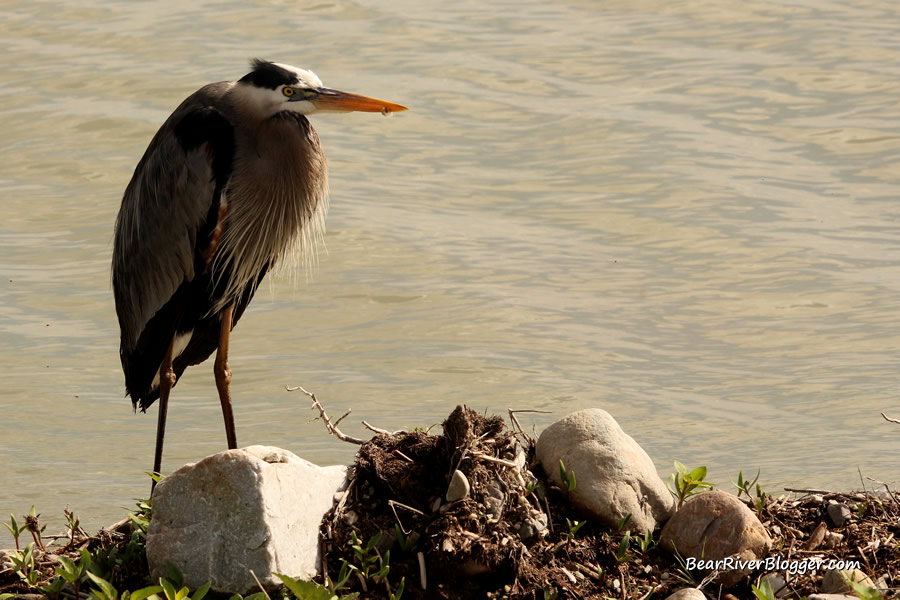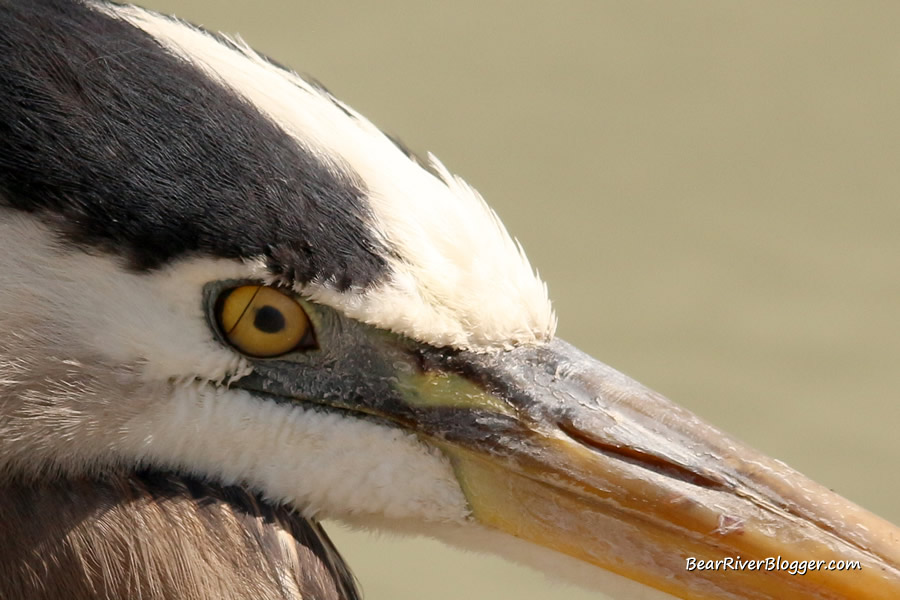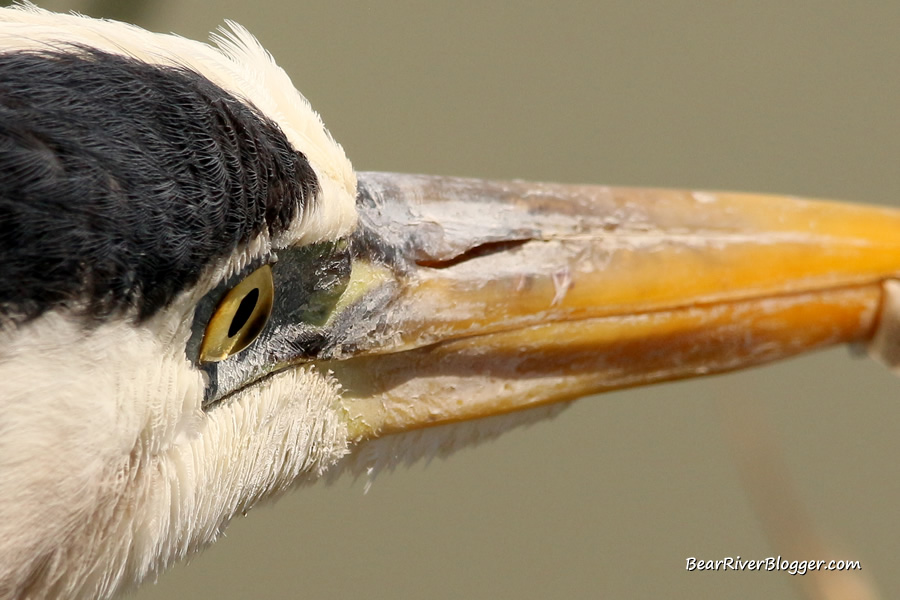I’ve said it before and I will say it again, learning something new about birds while birdwatching is very rewarding, to say the least.
And the only thing better than learning something new about birds is being able to photograph it and share it here on my website, hence the topic of today’s blog post, in fact.
A few years ago while I was photographing birds on the Bear River Migratory Bird Refuge auto tour route I crossed paths with a very content great blue heron casually sitting on the edge of the gravel road.

The heron acted very calm, almost in a trance of sorts, as I spent more than ten minutes taking photograph after photograph of the large, solitary bird from my vehicle as it, well, just stood there doing absolutely nothing but oddly gazing out over the open water for some unknown reason.
The heron was so close to my vehicle, in fact, I had to remove the 600mm camera lens I normally use to photograph birds and replace it with something smaller to actually get the whole bird in the picture, something I’ve never had to do before as you just don’t get that close to great blue herons in the wild, at least I don’t that is.
Typically, great blue herons are fairly easy to approach and photograph to a certain degree but definitely not from twenty feet away and rarely for such a long period of time.
This unusual and extremely close encounter did, however, grant me a very unique opportunity to capture some highly detailed images of the heron’s head and beak which, in turn, allowed me to learn something about great blue herons I wasn’t aware of until I started editing the images later that afternoon when I finally returned home from the bird refuge.
What I realized was great blue herons do, in fact, have a third eyelid in addition to their normal upper and lower eyelids called a nictitating membrane.

Like it is for other birds, the nictitating membrane for great blue herons is a transparent covering underneath their normal eyelids that helps protect the heron’s eyes by closing and covering their eyes whenever needed.
And with the third eyelid being transparent the heron is still able to see while it is covering the eyes, either in flight or thrusting its head into the water after a small fish, for example.
The third eyelid helps protect the heron’s eyes from dirt, debris, and water whenever it is covering their eyes and can actually be found on many birds, not just great blue herons, as a couple years ago I was fortunate to photograph a rough-legged hawk also showing its nictitating membrane, or third eyelid if you will, while doing some winter photography on the Bear River Migratory Bird Refuge.
If you think about it, a bird’s eyesight is crucial to its survival so it should be no surprise really that birds like the great blue heron have the necessary components like a third eyelid to help protect their valuable eyesight from dirt or debris.
If you are a birdwatcher or nature photographer like I am, I offer you to head on over to our subscribe page and sign up for email notifications for future blog posts where we share what we find and photograph on our excursions to places like the famed Bear River Migratory Bird Refuge.




